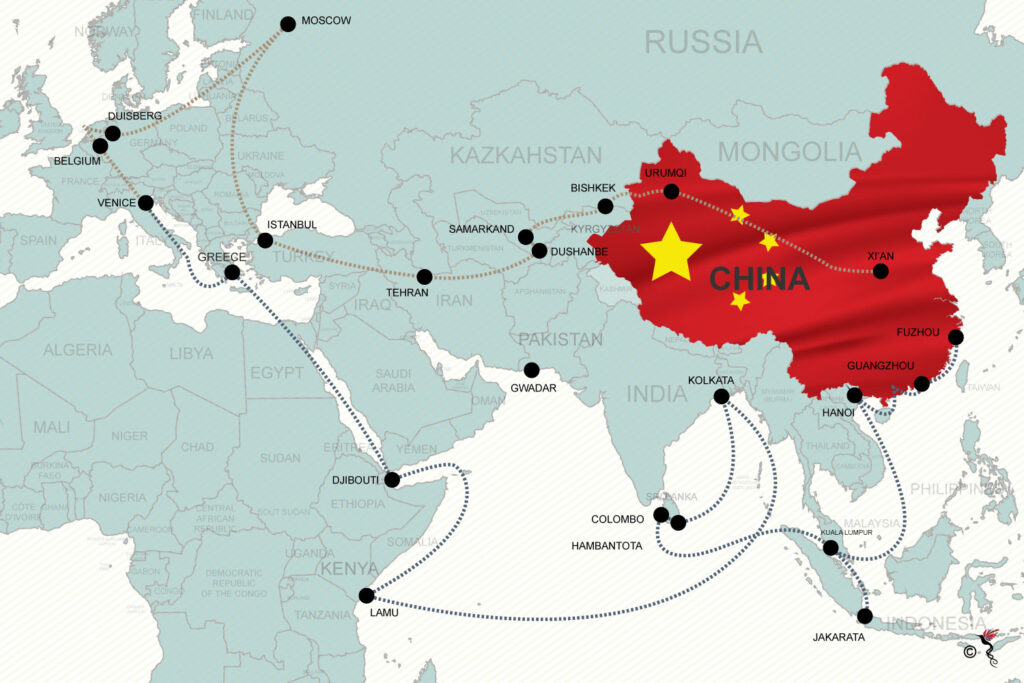In the 21st century, China, a rising communist nation, is a major problem for India’s national security, and in the future, it will be a global problem. The standoff highlights China’s policy dilemma over India. Beijing aims to use its power and physiological advantage in bilateral relations to successfully counter a growing New Delhi. China, on the other hand, is concerned about how the current crisis will affect its regional and global geostrategic goals. New Delhi should make better use of its position to influence Beijing’s behavior and extract benefits from it.

As we know, China’s expansion policy started in history under the Qing dynasty. The Qing dynasty was the final imperial dynasty in China, lasting from 1644 to 1912. It was an era noted for its initial prosperity and tumultuous end, and for being only the second time that China was not ruled by the Han people.
Mao Zedong, the founder of the Chinese Communist Party, established the People’s Republic of China (PRC) on October 1, 1949. Again, the 1949 People’s Republic of China (PRC) was seen as the return of Chinese expansionist policies.
According to my theory, which explains, the People’s Republic of China (PRC) is a communist nation that covers a vast territory in eastern Asia; the most populous country in the world: Cathay, China, Communist China, PRC, Red China, Mainland China. They still adopted the Qing Rule and followed the same as under the Qing Rule, China expanded beyond the Great Wall and started to annex more territories in the process. The Qing invaded Korea, managed to conquer Mongolia, and annexed the modern territories of Xinjiang and Tibet as well.
China’s secret plan or strategy vis-à-vis what we can call the “Secret” PLA Base in Cambodia to control the South China Sea. China is on a mission to dominate the high seas with a global network of 90 Chinese ports to feed the PLA.
Sun Tzu, China’s most famous military strategist, spoke extensively about the secret plan. He said secret operations are essential in war to let your plans be as dark and impenetrable as night, and when you move, they fall like a thunderbolt. China is trying to follow his advice, but they are failing miserably. First, they tried to crack a secret deal with the Solomon Islands, which was leaked, and they had to do a lot of damage control. Then they tried a secret sweeping pact with the Pacific nations. The draft was leaked, the deal failed, and now they are trying to build a secret military base in Cambodia. A report has exposed China’s plans to control the Indo-Pacific one military base at a time. The one in Cambodia is right between the Andaman and the South China Sea, and it will serve the People’s Liberation Army (PLA). This base is part of China’s grand strategy. They are chasing military dominance on the high seas. They are shortlisted by more than 10 countries in the Indo-Pacific. That is how many bases China is hoping to build shortly. It also has a network of 90 ports worldwide. These Chinese assets can feed the PLA.
Why do China’s plans to dominate the world’s waters pose a direct threat to India?
China is buying islands in other countries or just taking over land, then building homes for Chinese soldiers and their families on these lands, then building runways for their military planes, deploying powerful weapon systems and missiles there, with guard towers on every corner and Chinese soldiers carefully watching the gates. One cannot enter without permission. This is what a Chinese military base looks like. Why is this used? China is threatening to build more of them, and some of these bases could be dangerously close to Indian borders. This is the latest threat from China. It wants to deploy its military everywhere in the Indo-Pacific. It wants to dominate these waters. How can it do that by building military bases in China? It already has one such in Djibouti, in the Horn of Africa.
Now it is secretly developing a second base in Cambodia. The Chinese military has had an eye on Cambodia for years. A runway has come up in Cambodia in 2019, raising suspicions that a Chinese base could be built in the country soon. And sure enough, it is happening now. Let’s talk about China’s top-secret plan to build this military base in Cambodia. Reports say a groundbreaking ceremony is happening this week at the site where China is building the base in the Gulf of Thailand. It is situated adjacent to the Andaman Sea; Cambodia already has a base here. It’s called the Rheem Naval Base, and Cambodia is carving out some space for the Chinese right here. China will have a permitted presence in the northern section of the existing base.

Now look at where China is getting this base. It is right next to the disputed South China Sea. Beijing claims this entire region, and five other countries and regions have competing claims. The South China Sea is one of the most intensely contested locations in the world.
Now the Chinese military has got a base right there. China wants to keep it under wraps. In fact, both Cambodia and China are rejecting the claims of such a base.
China is not building such a base, but fresh details have emerged now that China and Cambodia have signed this pact in 2020. It was about expanding the Rheem naval base. Reports suggest China is building and financing this. According to the agreement, the Chinese military will have exclusive use of the northern portion of the base while their presence is concealed, as stated in an American newspaper. Now these claims are true. Cambodia is giving the exclusive right to China for a military base and has agreed to hide the presence of Chinese soldiers.
Now, why was the secret agreement struck? The reasons are obvious: Chinese military bases are controversial projects. If word gets out, it might lead to a backlash. Beijing wants to avoid all the attention, and Cambodia is assisting Beijing in concealing its true intentions. But how long can a military base be hidden? There is a satellite image doing the rounds, capturing what’s going on in Cambodia. This is the Rheem naval base. China is transforming this facility. Some structures have already been built.
China wants more military assets in the region right now China has just one operational military base in Djibouti. They were also, in fact, pursuing a base in the UAE, but the plans fell through China and are believed to have reached out to four more countries: Namibia, Equatorial Guinea, Solomon Islands, and Vanuatu. China wants to build bases in all these countries, plus they have a short list of 11 other potential sites like Angola, Tanzania, Kenya, Pakistan, Tajikistan, Myanmar, Thailand, Indonesia, Singapore, Sri Lanka, and Seychelles.
From the east to the west, China is eyeing bases everywhere. China may or may not succeed in making these bases, but if it is successful, India could be surrounded by Chinese military bases. This is what China’s trying to do in Asia. What about the rest of the world? China already has global network ports, and more than 90% of them are under Chinese control.
China’s quest for military bases is also part of great power competition, as that is how countries demonstrate power and project power through their military presence overseas. America has 750 bases in at least 80 nations. No other country came close to the US, but that does not mean other countries do not have a military base overseas. British forces have a sizable presence abroad.
Now, the same strategy is being followed by other countries. The UK has 145 overseas bases and Russia maintains foreign bases. It is believed to have anywhere between 24 and 36 bases, most of which are believed to be in Russia’s immediate neighborhood. India doesn’t have military bases overseas, though it does have a facility in Mauritius. China wants to enter into this race now, and it’s dangerous because China’s expansionism is open and its record of following the rules is quite poor. Military bases are the new project for the Chinese military bases where they can station soldiers.

Rahul Panwar
Rahul Panwar is pursuing MA in Defence Studies. Also, Associate Member of MP-IDSA Delhi doing research and covering National and International topics.


Hello there, I found your website via Google while looking for a related topic, your site came up, it looks great. I have bookmarked it in my google bookmarks.
I do agree with all of the ideas you have presented in your post. They are very convincing and will certainly work. Still, the posts are very short for newbies. Could you please extend them a little from next time? Thanks for the post.
Sweet website , super style and design, very clean and apply friendly.
You are a very smart individual!